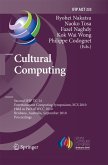The perspectives and techniques used in human-computer interaction design, practice and research are broadening. This book looks at emerging approaches which are likely to contribute to the discipline in near future. The underlying idea is that human character rather than technology should determine the nature of interaction. The concept of "interaction design" covers this range of concerns relevant to enabling quality design. Each chapter emphasizes alternative perspectives on interaction and new concepts to help researchers and practitioners relate to alternative design approaches and opportunities.
This second volume provides a wider perspective, from both a scientific and geographic outlook. New topics, such as psychological design processes, gerotechnology, modelling, e-learning and subconscious experiences are discussed from a team of international authors.
This book will be of considerable value to those seeking innovative perspectives upon designing andensuring effective interaction between humans and technology.
This second volume provides a wider perspective, from both a scientific and geographic outlook. New topics, such as psychological design processes, gerotechnology, modelling, e-learning and subconscious experiences are discussed from a team of international authors.
This book will be of considerable value to those seeking innovative perspectives upon designing andensuring effective interaction between humans and technology.
From the reviews: "The book consists of an introduction and ten papers, plus a consolidated index of terms and authors. ... the purpose of this book is to present new thinking in HCI, and in this, it succeeds. I would lend the book to graduate students interested in HCI, and I believe that research libraries should add a copy to their collections." (Richard Botting, ACM Computing Reviews, May, 2009)








